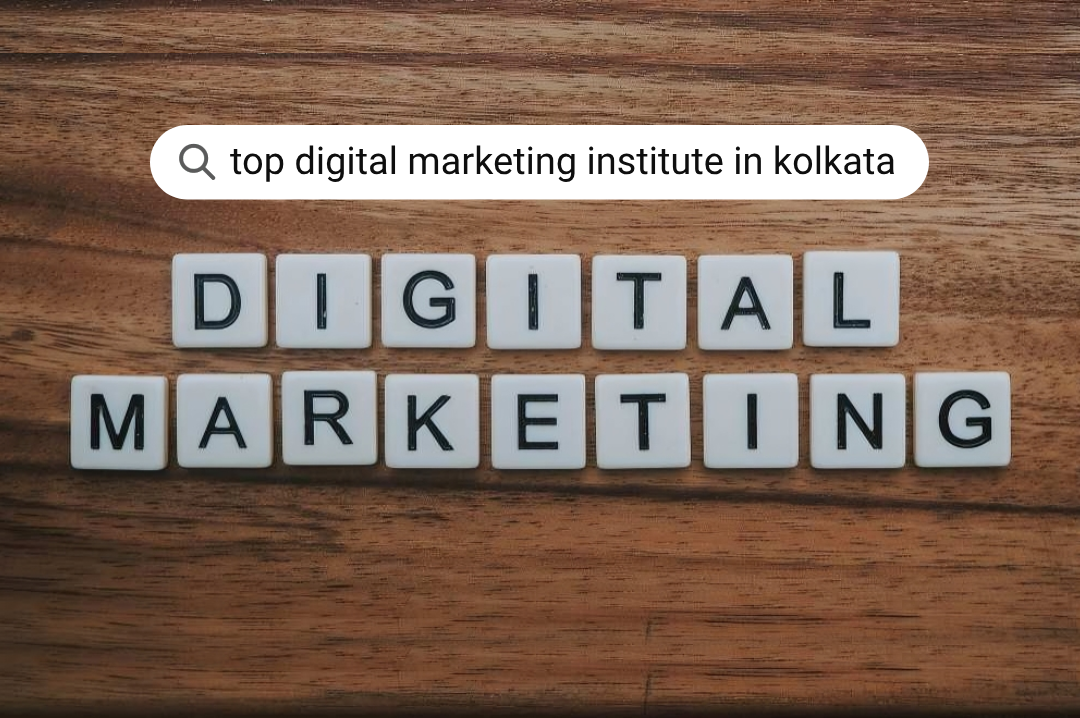It’s good to know that you are willing to build a career in the most demanding filed in 21st century. If you are from Kolkata and done with your 12th board exam then you need to know all about this industry and skills you need to develop to become a good UI&UX designer. If you are searching for the best UI, UX and web development training institute in Kolkata then you can check our course module, Web Design Pro.
All You Need to Know About UI and UX Design
Benefits of Learning UI and UX Design After 12th Board Exam:
Embarking on a journey in the world of User Interface (UI) and User Experience (UX) design right after completing your 12th board exams can be a transformative choice. Here’s a detailed look at the myriad benefits awaiting those who choose this path
1. Lucrative Career Opportunities:
UI/UX design isn’t just a career; it’s a thriving field with an ever-increasing demand for skilled professionals. Companies in diverse sectors, ranging from tech giants like Google and Apple to burgeoning startups, are constantly on the lookout for talented designers to elevate their digital products.
Imagine being the architect behind the next innovative app interface or the mastermind behind a website’s intuitive navigation. The opportunities are vast and varied, promising not just stability but also the potential for significant growth in your career.
2. Creative Expression and Problem-Solving:
One of the most exhilarating aspects of UI/UX design is the freedom it offers for creative expression. Designing user interfaces means creating visually captivating experiences that seamlessly blend aesthetics with functionality.
Moreover, every project presents a unique puzzle to solve. You’ll dive into the minds of users, understanding their needs and behaviors to craft solutions that not only look beautiful but also make their interactions with technology smoother and more enjoyable.
Picture yourself crafting the perfect flow for a shopping app, ensuring users find what they need with ease, or designing a gaming interface that immerses players in a world of adventure. UI/UX design is the realm where art meets problem-solving.
3. High Industry Demand:
In today’s digital age, UI/UX designers are the unsung heroes behind the screens. With the rapid evolution of technology, businesses recognize the pivotal role of design in attracting and retaining customers.
This demand translates into a plethora of job opportunities across industries. Whether you dream of working for a cutting-edge tech company, a forward-thinking healthcare provider, or a dynamic e-commerce platform, there’s a place for UI/UX designers everywhere.
Furthermore, the demand for skilled professionals means competitive salaries and the potential for quick career advancement. Your skills will always be in demand, ensuring a stable and fulfilling career path.
4. Versatility Across Industries:
UI/UX design isn’t confined to a single sector; it’s a skill set that transcends industries. From creating seamless mobile app experiences to designing intuitive website interfaces, the applications are endless.
Consider the impact you could make in healthcare by designing user-friendly patient portals or revolutionizing the travel industry with intuitive booking platforms. The ability to apply your skills across diverse fields allows you to explore various sectors and find your niche.
Additionally, this versatility opens doors to exciting projects and collaborations. You might find yourself designing a virtual reality experience for a museum one day and crafting a user-friendly dashboard for a financial institution the next.
5. Flexible Work Environment:
Flexibility is a hallmark of the UI/UX design profession. Many designers opt for freelance or remote work arrangements, allowing them to choose projects that align with their interests and values.
Imagine having the freedom to work from anywhere in the world, whether it’s a cozy coffee shop in your hometown or a bustling co-working space in a vibrant city. The ability to set your own schedule and work environment ensures a healthy work-life balance.
Moreover, freelancing offers the chance to build a diverse portfolio by collaborating with clients from various industries. Each project becomes a learning opportunity, honing your skills and expanding your design repertoire.
6. Hands-On Learning Experience:
UI/UX design education isn’t just about theory; it’s a hands-on journey of discovery. Courses often involve real-world projects where you’ll tackle design challenges, conduct user research, and create prototypes.
These practical experiences not only build your technical skills but also provide tangible portfolio pieces to showcase to potential employers. Whether you’re designing a mobile app interface or optimizing a website for accessibility, every project adds to your expertise.
Furthermore, you’ll work with industry-standard tools and software, gaining proficiency in design platforms such as Adobe XD, Sketch, or Figma. This exposure ensures that you’re well-equipped to enter the professional design landscape with confidence.
7. Impactful Design Contributions:
UI/UX designers have the power to shape how people interact with technology on a daily basis. Your creations can enhance efficiency, simplify complex processes, and ultimately improve the lives of users.
Consider the impact of designing a user-friendly educational platform that makes learning accessible to all or creating an intuitive interface for a healthcare app that helps patients manage their health seamlessly.
Every design decision you make has the potential to create a positive ripple effect, whether it’s streamlining online shopping experiences or designing inclusive interfaces for individuals with disabilities. As a UI/UX designer, you’re not just creating visuals; you’re crafting meaningful experiences.
8. Continuous Learning and Growth:
The world of technology is in a perpetual state of evolution, and UI/UX designers are at the forefront of innovation. Staying current with emerging trends and technologies is not just encouraged—it’s essential.
Fortunately, the field offers ample opportunities for continuous learning and growth. Whether it’s attending design conferences, participating in online workshops, or diving into new design methodologies, there’s always room to expand your knowledge.
Moreover, the dynamic nature of UI/UX design means that no two projects are alike. Each new challenge presents an opportunity to learn, experiment, and push the boundaries of creativity.
9. Networking and Collaboration:
Joining the vibrant community of UI/UX designers opens doors to valuable connections and collaborations. Whether it’s through industry events, design meetups, or online forums, you’ll have the chance to engage with like-minded professionals.
Collaborating on projects with diverse teams, including developers, product managers, and marketers, exposes you to different perspectives and approaches. These collaborations not only enrich your design process but also expand your horizons professionally.
Networking isn’t just about building contacts; it’s about forging lasting relationships with mentors, peers, and potential collaborators. The design community is known for its support and camaraderie, offering a wealth of resources for professional growth.
10. Global Opportunities:
The beauty of UI/UX design is its universal appeal. In an interconnected world, your skills as a designer are not bound by geographical constraints.
With the rise of remote work, you have the opportunity to collaborate with clients and teams from around the globe.
Imagine working on a project for a startup in Silicon Valley for one month and contributing to a design sprint for a tech company in Europe the next. The ability to work across time zones and cultures enriches your experience as a designer and opens doors to diverse projects.
Moreover, this global reach exposes you to a multitude of design trends and cultural nuances, broadening your perspective and enhancing your design sensibilities.
In conclusion there are many opportunities in this field, according to Linkedin pulse “The global UI and UX Design Software market size was valued at USD 1160.95 million in 2022 and is expected to expand at a CAGR of 23.37% during the forecast period, reaching USD 4093.63 million by 2028.”
Skills You Need to Have to Become a Good UI and UX Designer:
Becoming a proficient User Interface (UI) and User Experience (UX) designer requires a diverse set of skills that go beyond artistic flair. Here’s a glimpse into the essential qualities you’ll need to excel in this dynamic field:
1) Creativity:
The cornerstone of UI/UX design lies in creative problem-solving. You’ll need to think outside the box to craft visually appealing and user-friendly interfaces that captivate users.
2) Empathy:
Understanding the needs and behaviors of users is crucial. Empathy allows you to design experiences that resonate with users on a personal level, enhancing usability and satisfaction.
3) User Research:
Proficiency in conducting user research is essential. This involves gathering insights into user preferences, behaviors, and pain points to inform design decisions.
4) Wireframing and Prototyping:
Translating ideas into tangible designs requires skill in wireframing and prototyping. These tools help visualize concepts and test functionality before final implementation.
5) Visual Design:
A strong grasp of visual design principles is a must. This includes knowledge of color theory, typography, layout, and iconography to create cohesive and visually appealing interfaces.
6) Interaction Design:
Designing how users interact with interfaces is vital. Understanding the principles of interaction design helps create intuitive and seamless user journeys.
7) Information Architecture:
Structuring content in a clear and organized manner is key to effective UX design. Information architecture skills ensure users can easily find what they need within an interface.
8) Coding Basics:
While not always required, a basic understanding of HTML, CSS, and JavaScript can be beneficial. This allows you to communicate effectively with developers and understand technical limitations.
9) Usability Testing:
Conducting usability tests helps validate design choices and identify areas for improvement. Skill in setting up and analyzing these tests is essential for iterative design processes.
10) Adaptability:
The tech landscape evolves rapidly, so being adaptable is crucial. Embracing new tools, methodologies, and design trends ensures you stay relevant in the ever-changing field of UI/UX design.
11) Software to Learn:
Familiarity with industry-standard design software is essential. Adobe XD, Sketch, and Figma are popular tools for creating wireframes, prototypes, and high-fidelity designs.
Course Module of the Best UI and UX Design Course in Kolkata:
Module One: Introduction to website designing

- Introduction to website designing.
- Designing and development process.
- Communication on the Internet.
- Introduction to UI/UX Design
- UX Design Fundamentals,
- Designing Tools.
- Web Layout Design.
- Introduction to Vector graphics.
- Various UI component & Icon Designing.
- UI design with Figma.
- Web UI Design.
- Mobile App UI Design.
- Prototyping.
- Projects.
Module Two: Coding with HTML and CSS

- Introduction to HTML.
- Environment creation.
- HTML elements.
- Link Creation.
- UX Design Fundamentals,
- HTML5 Audio & Video.
- What is CSS.
- Types of CSS.
- Advanced CSS.
- CSS Properties.
- CSS Animation.
- Projects.
Module Three: Javascript and jQuery

- Introduction to JavaScript.
- Data Types.
- Basic Operators of js.
- Iteration: The for Loop.
- Functions.
- Introduction to jQuery.
- Implementation of various jQuery features
- jQuery Selectors, Events, Methods & more.
Module Four: Responsive Website with Bootstrap

- Introduction to Bootstrap.
- Grid system.
- Initial Environment Setup.
- Bootstrap components.
- Projects.
- Introduction to React
- React components
- Passing data via “props” in React
- State in React
- React Router
- Website with React & Bootstrap
Module Five: Responsive Website with Bootstrap

- Introduction to php.
- Setup Xampp server.
- Operators, Functions.
- Introduction to database.
- Database concept.
- Introduction to WordPress.
- Theme customization.
- Theme development.
- WordPress website with Elementor.
- E-Commerce website with WooCommerce.
- Web Hosting





